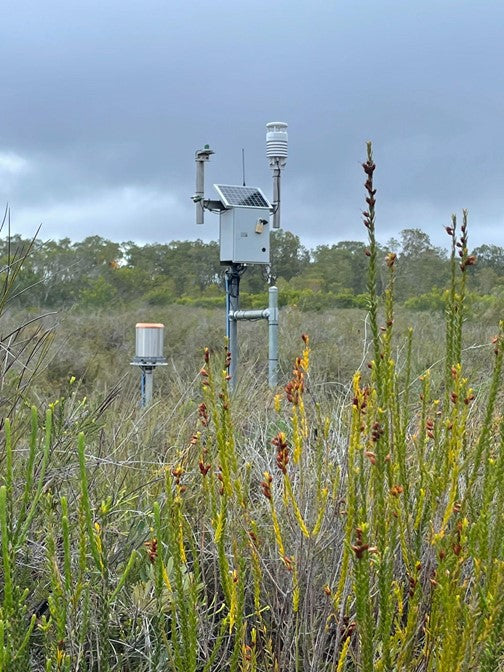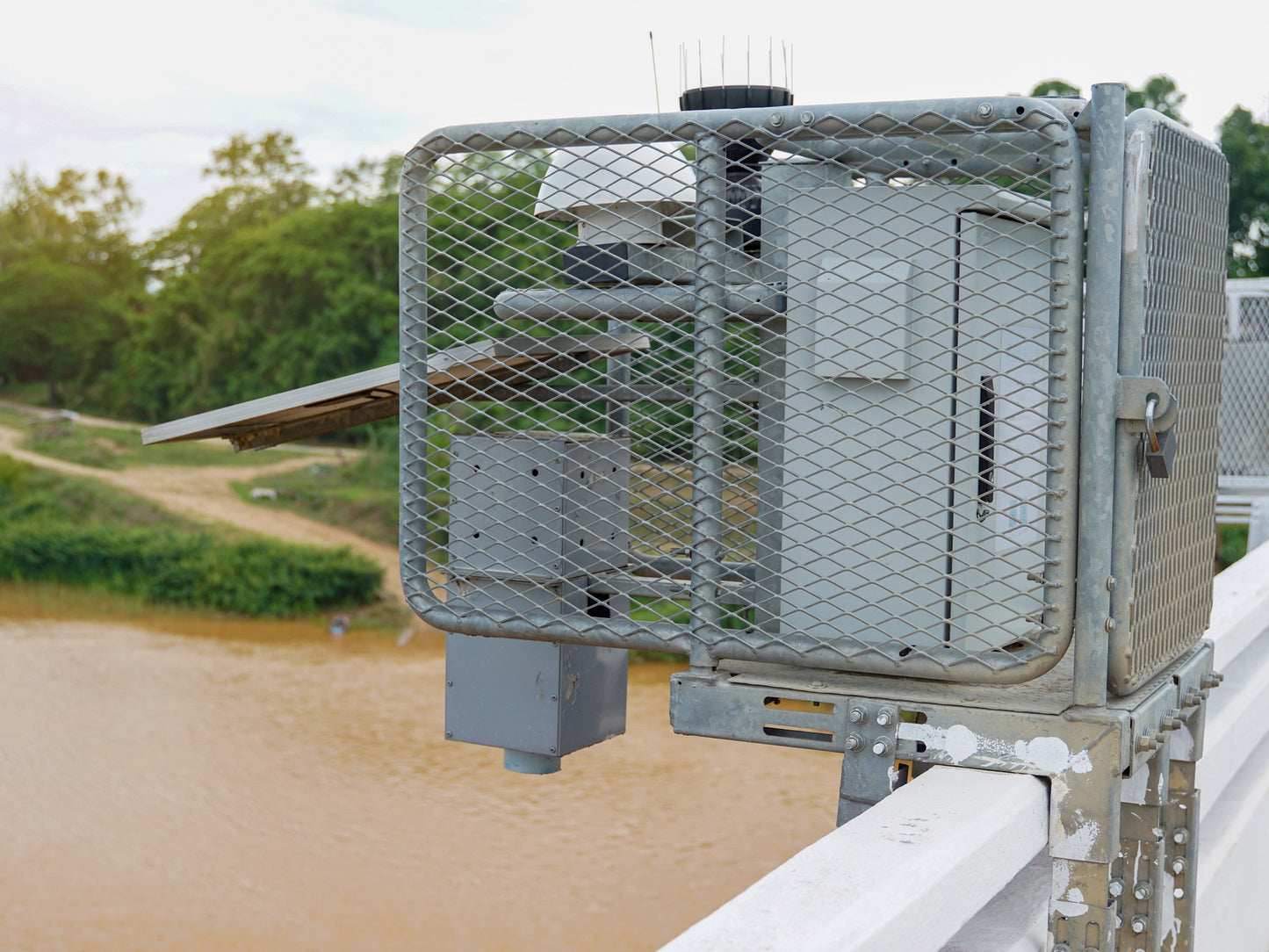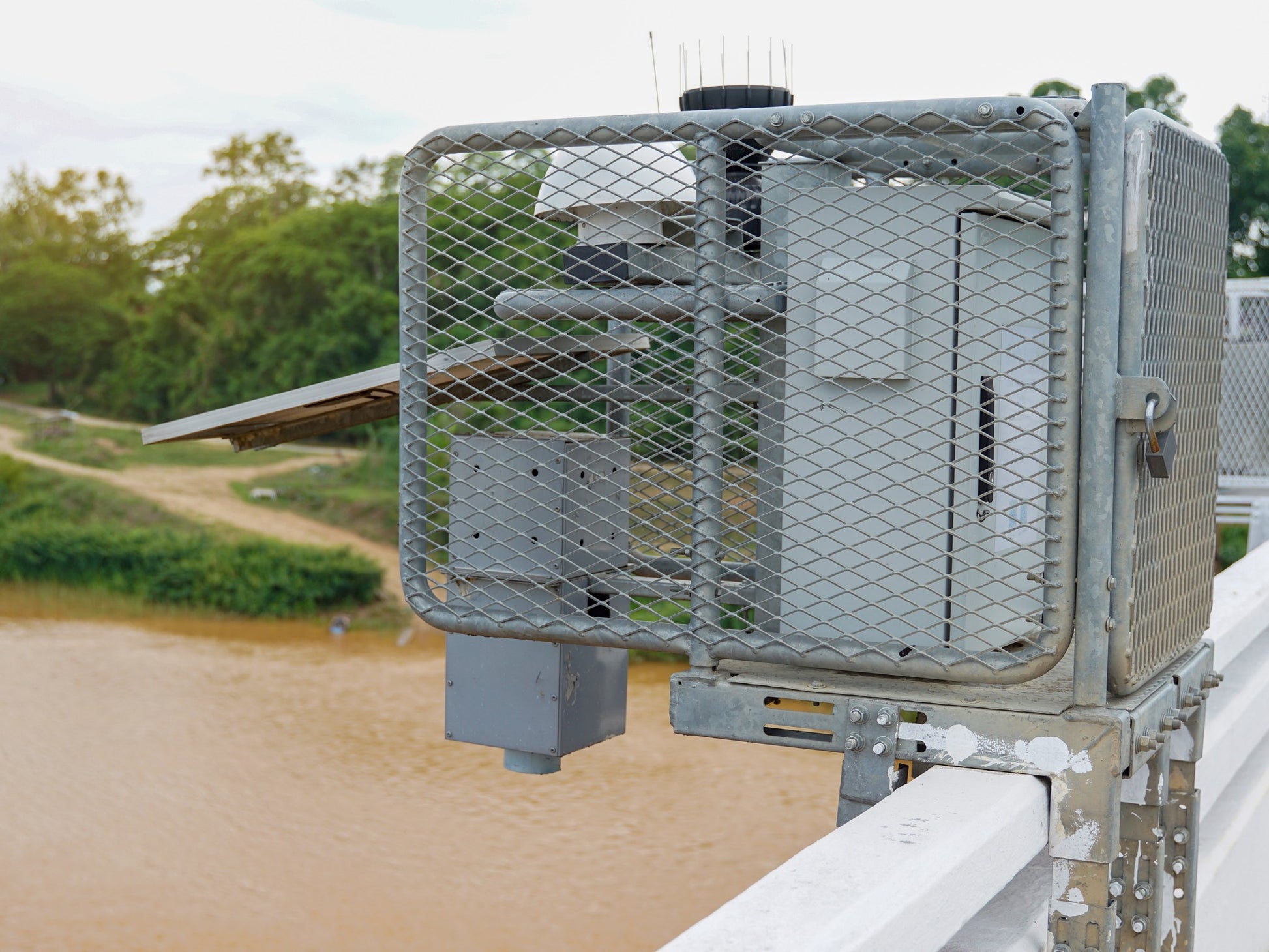World first IoT triple redundancy network for mission critical disaster management.
Floods are among the most devastating natural disasters, causing widespread damage to communities, infrastructure, and the environment. Our IoT Flood Mitigation & Prediction Solution integrates satellite, sensor, and AI technologies to deliver real-time monitoring, predictive analytics, and automated response mechanisms. Designed for urban and regional flood management, this cutting-edge, triple-redundancy system ensures uninterrupted connectivity, even in remote areas, enabling proactive disaster response and long-term resilience planning.
How It Works
🌍 Triple-Redundancy Network for Continuous Monitoring
- Low-orbit satellites (SpaceX Direct-to-Cell IoT) for global data transmission
- NB-IoT & LoRaWAN connectivity for localised real-time monitoring
- Edge computing & sensor networks for immediate flood risk analysis
📡 Real-Time Environmental Data Collection
- Monitors precipitation, temperature, humidity, and atmospheric conditions
- Tracks water levels in rivers, reservoirs, and urban drainage systems
🧠 AI-Powered Flood Prediction & Mapping
- Uses machine learning and AI flood mapping to detect early warning signs
- Integrates Cameras for live flood pattern monitoring
📊 Comprehensive Historical Data Pooling
- Archives flood event data from 1-in-5 to 1-in-500-year return periods
- Supports long-term flood risk assessment and infrastructure resilience planning
🚀 Remote Monitoring & Automated Alerts
- Predicts, detects, and responds to potential flooding before it happens
- Provides actionable insights for municipalities, emergency services, and infrastructure planners
Why It Matters
✅ Faster Response & Improved Preparedness – Reduces damage & enhances safety
✅ Data-Driven Decision-Making – Helps authorities develop smarter flood mitigation strategies
✅ Remote & Autonomous Monitoring – Reduces manual inspections & operational costs
✅ Scalable & Sustainable – Future-proofs urban and regional areas against flooding
This first-of-its-kind IoT flood mitigation system empowers communities with the tools to predict, prepare for, and prevent floods—before they happen. 🌊
IoT
IoT Bush Fire Hazard Weather Station
IoT Bush Fire Hazard Weather Station
Couldn't load pickup availability
IoT Bush Fire Hazard Weather Station
The Customised Bush Fire Hazard Weather Station (SNiP) offers real-time, location-specific environmental data critical for informed decision-making in fire danger prediction, detection, and control strategies.
Comprehensive Parameter Monitoring: This Weather Station continuously monitors an array of vital parameters, including:
-
10-Hour Fuel Moisture Sensors: IoT-enabled sensors are strategically placed in forested areas to measure the moisture content of small-diameter (10-hour) forest fire fuels. These sensors employ advanced technology, such as time-domain reflectometry (TDR), to provide accurate and continuous data on fuel moisture levels. This information is essential for assessing the flammability of forest fuels, aiding in early fire detection, and informing controlled burn activities.
-
Soil Moisture Sensors: IoT sensors are deployed in the ground to monitor soil moisture levels. By tracking soil moisture content, these sensors help in understanding the availability of moisture in the soil, which is crucial for evaluating fire risk and drought conditions.
-
Temperature Sensors (Air, Plant, and Soil): IoT-based temperature sensors are strategically positioned to capture temperature data from various environmental layers. This includes air temperature, plant temperature, and soil temperature. Temperature monitoring assists in assessing the overall environmental conditions and identifying hotspots where fires might ignite or spread more rapidly.
-
Relative Humidity and Vapour Pressure Deficit (VPD): IoT sensors measure relative humidity, dew point temperature, vapor density, and saturated vapor pressure. These parameters are essential for understanding the moisture content in the air and calculating the VPD. VPD is a key indicator of atmospheric moisture stress on vegetation and helps predict fire risk.
-
Precipitation Sensors: IoT sensors track precipitation levels, including rainfall. This data aids in evaluating moisture availability and drought conditions, which are critical for assessing fire danger.
-
Solar Radiation Sensors: These sensors capture incoming solar radiation. Solar radiation data is valuable for understanding the energy available to drive processes like evaporation and transpiration, which are key components of fire risk assessment.
-
Smoke and Dust Sensors: IoT sensors designed to detect smoke and dust particles provide early indicators of fire outbreaks. Rapid increases in smoke and dust levels can signal the presence of a wildfire.
-
Wind Speed, Wind Gust Speed, and Wind Direction Sensors: Wind monitoring is vital for predicting fire behavior and direction. IoT sensors measure wind speed, gust speed, and wind direction to provide critical data for fire modeling and control strategies.
-
NDVI (Normalized Difference Vegetation Index): NDVI sensors measure the greenness and health of vegetation. Lower NDVI values can indicate stressed or dry vegetation, which is more susceptible to ignition. Monitoring NDVI helps assess vegetation condition and fire risk.
Customized Bush Fire Hazard Weather Station delivers essential data and insights for effectively managing bushfire risks. It provides real-time weather and environmental data, including critical fuel moisture levels, essential for assessing fire danger and deploying control strategies. The use of natural dowels and state-of-the-art technology for fuel moisture measurement guarantees the precision and reliability of the collected data.
By adopting this system, organizations and authorities engaged in fire management can make more informed decisions to mitigate the risks associated with bushfires, safeguard communities and ecosystems, and optimize the allocation of resources for fire control and prevention efforts.

IoT
IoT flood mitigation - Downstream - 12 months managed services

IoT
IoT Bush Fire Hazard Weather Station

IoT
IoT Water Buoy for Water Quality Monitoring - 12 months managed services

IoT
IoT Consultation - Full Day







